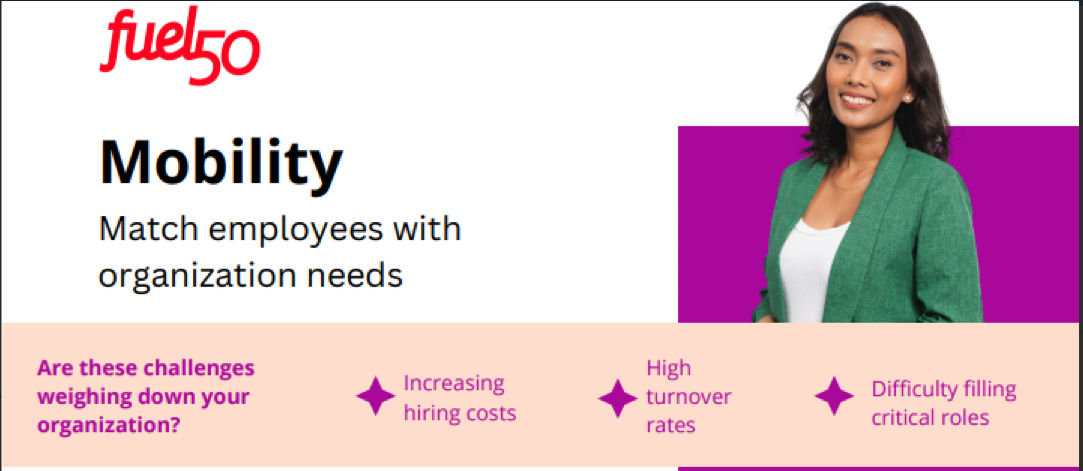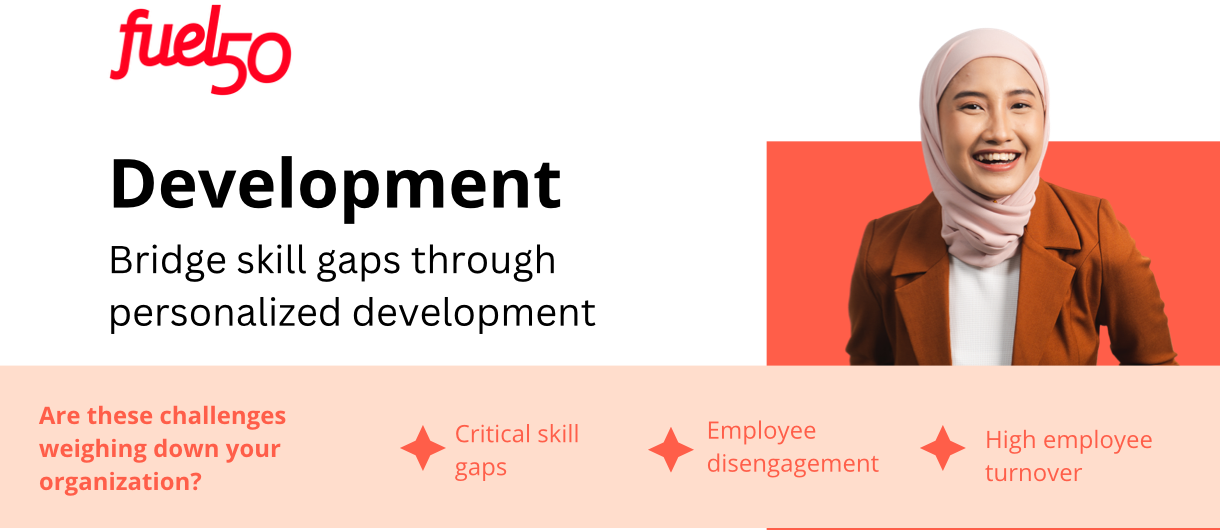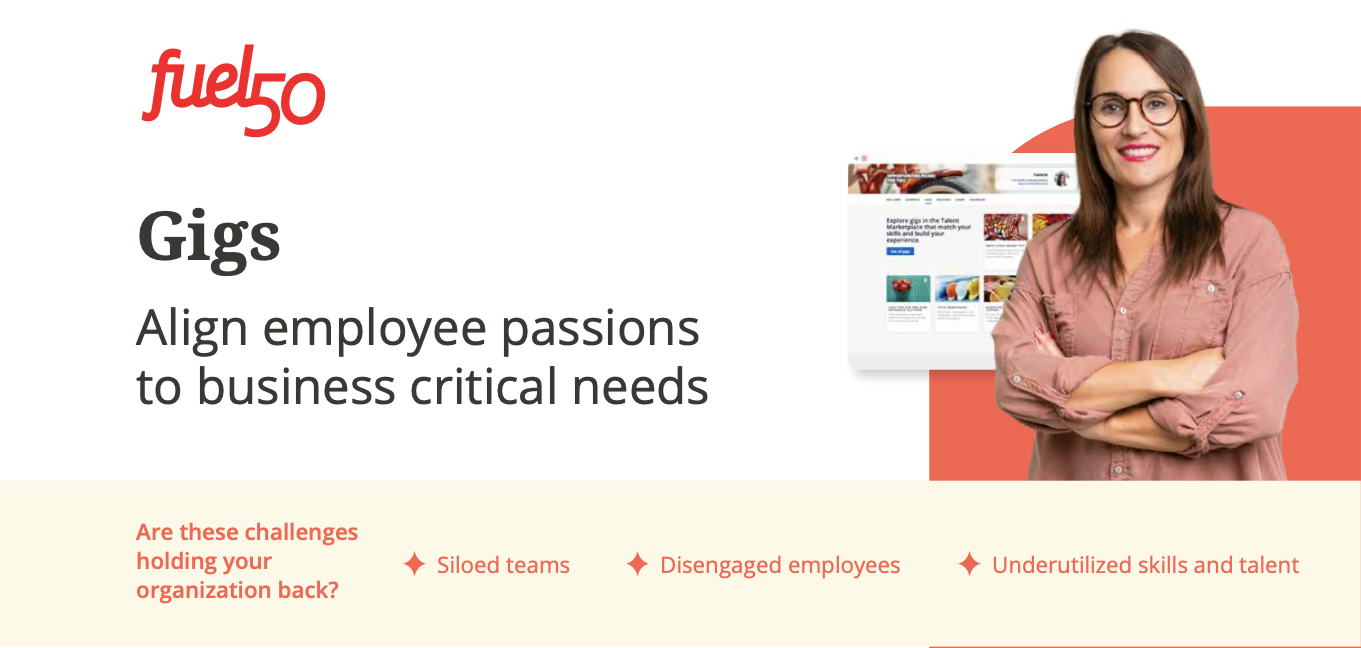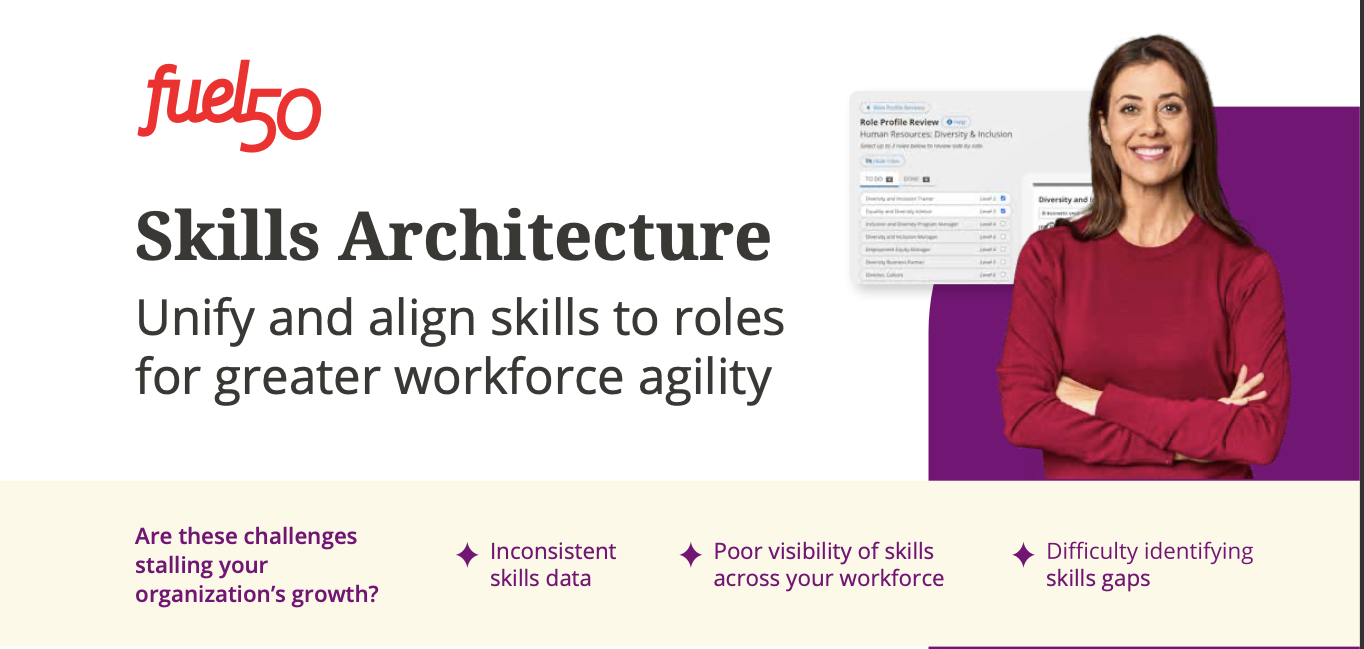When IBM faced a critical leadership transition in 2011, they didn’t scramble to find a replacement for outgoing CEO Samuel Palmisano. Instead, they smoothly announced Virginia Rometty as the successor, culminating years of intentional succession planning. This transition was hailed as one of the most seamless in corporate history.
But not every company is IBM, and not every succession is so well-orchestrated.
Maybe you’re a mid-sized company without IBM’s resources. Perhaps you’re growing rapidly and struggling to keep up with your leadership needs. Or you might be in an industry where the skills required for leadership are evolving faster than your current development programs can handle.
Whatever your situation, if you’re finding succession planning a challenge, you’re not alone. The good news? You don’t need IBM’s resources to implement an effective succession planning process. With the right tools and approach, you can create a robust pipeline of future leaders, ensure business continuity, and drive your organization’s long-term success.
Note: Struggling to turn your workforce agile? Fuel50’s talent marketplace can help you uncover hidden potential and create clear growth paths. Request a demo today.
What is succession planning?
Succession planning is a strategic process within talent management that focuses on identifying and developing future leaders to fill key positions in an organization. This proactive approach ensures business continuity and maintains organizational performance when leadership changes occur.
The succession planning process typically involves:
- Identifying critical positions within the company
- Assessing potential candidates for these roles
- Developing these individuals through targeted training and experiences
- Creating a succession plan that outlines how transitions will occur
Effective succession planning goes beyond simply naming replacements. It involves nurturing a pool of talent to ensure the organization has capable leaders ready to step into crucial roles at any time. This strategy helps mitigate risks associated with unexpected departures, retirements, or organizational growth.
Some key benefits of succession planning include:
- Ensuring leadership continuity
- Preserving institutional knowledge
- Boosting employee morale and retention through clear career pathways
- Aligning talent development with long-term business goals
- Reducing costs and disruptions associated with external hiring
What is an example of succession planning?
IBM’s succession planning process, particularly in the transition from CEO Samuel Palmisano to Virginia (Ginni) Rometty in 2011-2012, serves as an excellent example of effective succession planning in action.
Here’s how IBM approached succession planning:
- Long-term leadership development: IBM implemented a comprehensive Workplace Management Initiative (WMI) to identify and develop talent across the organization. This initiative allowed employees to plan and track their own development, while managers could assess talent requirements and availability.
- Identifying key positions: IBM recognized the CEO position as critical and began preparing potential successors well in advance.
- Assessing and developing candidates: Rometty, who had been with IBM since 1981, was given opportunities to climb the corporate ladder, eventually becoming SVP and Group Executive for Sales, Marketing and Strategy before her promotion to CEO.
- “Dual-hatting”: IBM used a strategy where HR leaders performed tasks that benefited both personnel functions and business operations, strengthening the connection between talent management and business strategy.
- Selecting based on merit: Rometty was chosen not because she resembled Palmisano, but because of her proven track record and vision for IBM’s future.
- Transparent transition: When Palmisano announced his retirement in October 2011, he simultaneously announced Rometty as his successor and outlined a clear transition plan.
- Gradual handover: The succession process was planned over 12 months. Rometty took over as CEO in January 2012, while Palmisano remained Chairman of the Board until September 2012, ensuring a smooth transition.
- Stakeholder communication: Investors, executives, and employees were kept informed throughout the process, eliminating surprises and maintaining confidence.
This approach resulted in what was widely regarded as one of the smoothest CEO transitions in corporate history. It demonstrates how effective succession planning goes beyond simply naming a replacement, instead focusing on ongoing talent development, strategic selection, and carefully managed transitions.
IBM’s case highlights the importance of viewing succession planning as a continuous process rather than a one-time event, and shows how a well-executed plan can ensure leadership continuity and maintain organizational performance during significant changes.
Why is a succession plan so important?
A succession plan is crucial for organizations to ensure leadership continuity and maintain operational efficiency in the face of change. Here’s why developing a robust succession planning strategy is vital:
- Ensures business continuity: By identifying and preparing future leaders for key positions, succession planning helps organizations maintain stability during leadership transitions. This proactive approach minimizes disruptions to business operations and helps achieve long-term business objectives.
- Preserves institutional knowledge: Effective succession planning involves knowledge transfer from senior leaders to potential successors. This process helps retain critical institutional knowledge within the organization, even as key leaders depart.
- Develops a strong talent pipeline: Succession planning is not just about filling top positions; it’s about creating a talent pipeline throughout the organization. It involves identifying high-potential employees and providing them with structured development opportunities to prepare for future roles.
- Enhances employee engagement and retention: When employees see clear career paths and opportunities for advancement within the organization, they are more likely to stay engaged and committed. This can significantly improve retention rates, especially among top talent.
- Reduces recruitment costs and risks: By developing internal talent, organizations can reduce their reliance on external hiring for leadership positions. This not only saves recruitment costs but also reduces the risks associated with bringing in leaders unfamiliar with the company culture.
- Aligns talent management with business strategy: Succession planning forces organizations to think strategically about their future talent needs in relation to their long-term business goals. This alignment ensures that talent development programs are focused on building the skills and capabilities the organization will need in the future.
- Manages risk: Having succession plans in place for critical roles helps mitigate the risk of sudden departures or unexpected events that could leave crucial positions vacant.
- Promotes a culture of development: Implementing succession planning processes demonstrates the organization’s commitment to employee growth and development. This can foster a culture of continuous learning and improvement throughout the company.
- Facilitates smooth leadership transitions: As demonstrated in IBM’s case, well-executed succession planning can lead to smooth leadership transitions, maintaining stakeholder confidence and organizational momentum.
- Supports diversity and inclusion initiatives: Succession planning provides an opportunity to intentionally develop a diverse pool of potential leaders, supporting organizational goals for diversity and inclusion at all levels.
The benefits of succession planning extend beyond just preparing for leadership changes. It’s a comprehensive talent management strategy that strengthens the organization’s ability to adapt to future challenges, fosters employee growth, and ensures long-term organizational success.
By investing in succession planning, companies like IBM have shown that they can navigate leadership transitions smoothly, maintain their competitive edge, and continue to thrive in an ever-changing business landscape.
Note: Struggling to turn your workforce agile? Fuel50’s talent marketplace can help you uncover hidden potential and create clear growth paths. Request a demo today.
Why you need a skills-based succession planning strategy and how to implement one?
When labor researchers look back on this chapter in time, they will likely deem it “the era of skills.” Nearly every organization wants to become skills-based or skills-centric as they finally recognize the significant value that skills visibility presents across the organization.
Even so, this journey remains nascent because, while employers know what they want, they don’t necessarily know how to get it. And nowhere is this more apparent than in succession planning.
Historically, succession planning has proved challenging, with only some roles—primarily in the C-suite—deemed worthy of the effort. As such, succession planning has rarely been an enterprise-wide initiative. This kind of mindset is counterproductive, especially if the goal is the organization’s long-term viability.
Identifying a gap between reality and intent, Deloitte conducted a years-long research study that found, “Most companies doing succession planning are often derailed by a host of symptoms that point back to a common culprit: the failure to recognize and address the impact of human behavior on the succession-planning process.” This distinction is important because, as the American Psychological Association explains, “Human skills are based in behavior.”
Considering the link between skills and behavior, skills visibility is fundamental to building a successful succession-planning strategy. Leveraging skills and continuously reevaluating those skills to inform and update talent pools and talent pipelines is critical to long-term success.
Here are five ways to do that:
1. Rebuild rather than revisit
Succession planning is a “what goes around, comes around” talent strategy for a few reasons. For one, it enables organizations to retain employees, ensuring the ability to navigate evolving labor market conditions.
For another, researchers like Josh Bersin have known what successful succession planning entails for years that: “We are greater than me.” These types of strategies require empowering employees, operating collectively and measuring the results. What’s different today is how and where organizations apply succession planning to their business.
Recommendation: Rather than dust off the same succession-planning strategy used in years prior, consider how the organization’s current state will inform its future state.
2. Set a why
Rather than focus only on specific roles, focus on a desired outcome. Though outcomes vary by organization, HRD points out that succession planning is a practical way to minimize disruption through proactive risk management, enabling organizations to adapt to changing circumstances and fill critical roles with little to no negative impact on productivity and performance.
Taking an expanded definition can provide benefits across the organization and enable employees at all levels to showcase skills that might otherwise be overlooked.
Recommendation: Knowing there are multiple ways to use succession planning, start by designing a strategy that connects a specific need to a measurable result.
3. Promote skills visibility
Having the right people in the right place at the right time is critical, so with a why in place, take the time to assess and evaluate the skills, competencies and organizational knowledge that currently exist across the business.
This level of insight will help determine succession candidates as well as any at-risk roles, teams or business units.
As Deloitte suggested, failing to see what’s already there is often the root cause of why these initiatives fail, making it even more important to prioritize skills visibility from the start.
Recommendation: Skills are the currency of the modern workplace and should be factored into any succession-planning strategy. By understanding what exists, it’s possible to envision where to go and how to bridge skill gaps.
4. Connect efforts
Remember that every employee brings a unique set of skills and knowledge to both their role and the organization. LinkedIn Research shows that employees are twice as likely to stay if they have the chance to take on other opportunities within the business.
This is why succession planning cannot operate in a vacuum; it must be knitted into a larger talent framework. Keeping employees engaged and satisfied at work is as much a part of succession planning as it is internal mobility, learning and development and other strategies.
Recommendation: As business objectives are apt to change over time, so are employees’ wants, needs and desires. Be sure to keep the employee experience top of mind throughout the process.
5. Stay agile
To follow through on the addressing human behavior piece of Deloitte’s findings, organizations need to centralize and institutionalize succession planning.
There are a few ways to go about this, from capturing knowledge before people have the chance to leave the organization to creating personalized development plans to advance skills development. It’s one thing to have visibility. It’s another to use this to the organization’s advantage.
The right technology will automatically map out career paths, match employees with opportunities that facilitate growth and support talent deployment to fill vacancies and maintain active talent pipelines.
Recommendation: Don’t lose sight of the plan once enacted. Lean on technology to support these changes as goals and circumstances continue to evolve.
SHRM notes that “Succession planning is used to anticipate the future needs of the organization and to assist in finding, assessing and developing the human capital necessary to realize the strategy of the organization.” There is nothing short-term about succession planning, nor should there be.
And while the saying goes, “The best-laid plans …” in this instance, that means revisiting and retooling along the way, changing course as the need for different skills and behaviors ebbs and flows, and sticking with succession planning until it becomes deeply entrenched as an integral part of the organizational makeup.
Top 5 best practices for succession planning
Here are the top 5 best practices for effective succession planning, drawn from successful examples like IBM’s approach:
1. Start early and plan continuously
Succession planning should be an ongoing process, not a reactive measure. Begin identifying and developing potential successors well before you anticipate needing them. This continuous approach allows for:
- Long-term development of future leaders
- Regular assessment and updating of succession plans
- Time to address any talent gaps through targeted development programs
2. Align succession planning with business strategy
Ensure your succession planning strategy supports your overall business objectives. This involves:
- Identifying critical positions that are crucial to achieving business goals
- Developing succession candidates with skills aligned to future business needs
- Regularly reviewing and adjusting plans as business strategies evolve
3. Create a robust talent development program
Invest in comprehensive leadership development programs to prepare potential successors. This should include:
- Offering diverse learning experiences, including job rotations and stretch assignments
- Providing mentoring and coaching opportunities
- Creating individual development plans for high-potential employees
4. Foster a culture of internal mobility
Encourage internal talent development and mobility within the organization:
- Create clear career paths and communicate them to employees
- Implement a talent marketplace to make internal opportunities visible
- Recognize and reward managers who develop and promote internal talent
5. Ensure transparency and communication
Make the succession planning process as transparent as possible:
- Communicate the existence and importance of succession planning to all employees
- Provide clear feedback to potential successors about their development progress
- Keep key stakeholders informed about succession plans for critical roles
Struggling to implement a succession planning process at your organization? Here’s how Fuel50 can help
While Fuel50 isn’t exclusively a succession planning tool, its comprehensive talent marketplace platform offers several features that significantly support and enhance succession planning efforts.
Here’s how Fuel50 can elevate your succession planning process:
Help you identify and develop potential successors
Fuel50’s AI-driven skills ontology goes beyond traditional succession planning methods. It creates a detailed map of skills across your organization, allowing you to identify potential successors based on their actual capabilities rather than just their current roles.
The platform’s career pathing tools enable employees to visualize potential trajectories within your organization, helping you spot aspiring leaders who align with your succession needs.
By combining skills mapping with career aspirations, Fuel50 helps you create a more nuanced and accurate picture of your talent pipeline. This approach ensures you’re not just filling positions, but matching the right talent to the right roles for long-term success.
Bring visibility into skills gaps and development needs
One of the challenges in succession planning is understanding where your potential successors need to grow. Fuel50 addresses this by providing comprehensive skills gap analysis.
The platform compares the current skills of potential successors against the requirements of key positions, highlighting areas where development is needed.
This visibility allows you to create targeted development plans for your succession candidates. Instead of generic leadership training, you can focus on the specific skills and experiences each individual needs to be ready for their future role.
This targeted approach not only accelerates development but also ensures a better fit when transitions occur.
Foster a culture of continuous learning and development
Fuel50’s personalized learning and development recommendations transform succession planning from a top-down process to a collaborative effort. The platform offers tailored suggestions for courses, resources, and experiences that align with both the employee’s career goals and your organization’s succession needs.
Moreover, the platform’s gig marketplace feature allows employees to take on short-term projects or assignments in different parts of the business.
This experiential learning is crucial for developing well-rounded leaders who understand various aspects of your organization. By integrating learning and development so closely with career progression, Fuel50 helps create a culture where employees are constantly preparing for future roles.
Enhance retention of high-potential employees
Succession planning isn’t just about identifying future leaders; it’s about retaining them. Fuel50’s focus on career growth and development plays a crucial role in keeping your high-potential employees engaged and committed to your organization.
The platform’s transparency about career paths and development opportunities gives these employees a clear vision of their future within your company.
Furthermore, Fuel50’s mentoring features facilitate connections between current leaders and potential successors. These relationships not only aid in knowledge transfer but also help potential successors feel valued and invested in, increasing their likelihood of staying with your organization long-term.
Provide data-driven insights for strategic workforce planning
Effective succession planning requires a deep understanding of your current talent landscape and future needs. Fuel50’s analytics capabilities provide valuable insights that can inform your succession strategy.
The platform can help you identify trends in skill development, track the progress of potential successors, and even predict future skill needs based on your organization’s direction.
These insights allow you to take a more proactive approach to succession planning. Instead of simply reacting to vacancies as they occur, you can strategically develop your talent pipeline to meet future leadership needs. This data-driven approach ensures your succession planning efforts align closely with your overall business strategy, creating a more resilient and adaptable organization.
Note: Struggling to turn your workforce agile? Fuel50’s talent marketplace can help you uncover hidden potential and create clear growth paths. Request a demo today.











